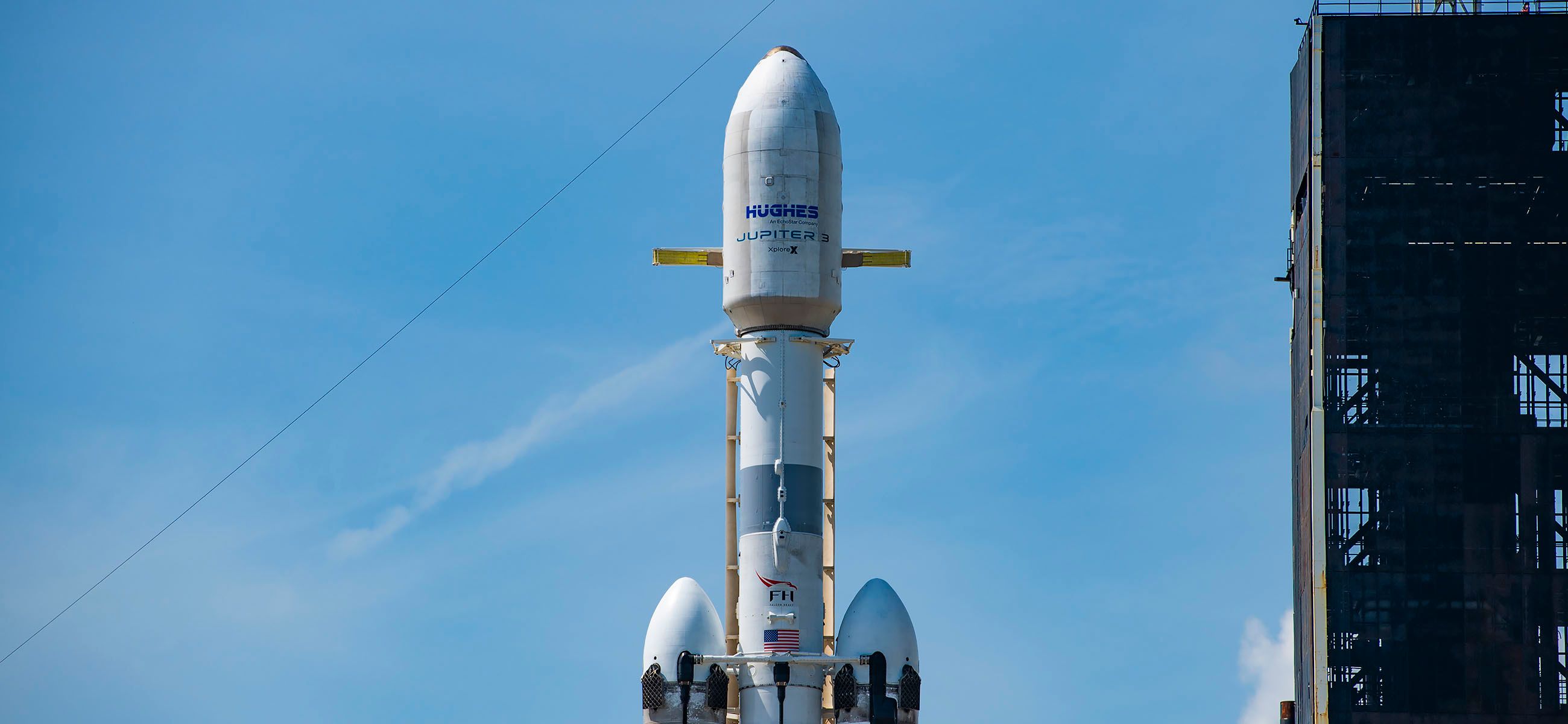It’s not Falcon like Falcon. It has been known for some time that SpaceX uses more than one type of upper stage depending on the needs of a given mission, but only now have we learned the details. Falcon rockets even fly with three different upper stage variants that differ in how long they last in orbit.
Already in 2019, SpaceX first tested a Falcon 9 with a second stage that was equipped with a gray bar. Its purpose is to adjust the thermal properties of the stage and thereby maintain optimal temperatures of propellants in the tanks. This is important for more demanding missions, in which the upper stage of the rocket spends a long time in orbit, during which it needs to ignite its engine several times, even with delays of several hours between each ignition. The gray bar and other stage adjustments prevent fuel from freezing and also ensure the functionality of all systems during a long stay in orbit. The strip was first tested on the CRS-18 mission in July 2019, we wrote about it in detail here. Subsequently, we had the opportunity to see the streak in action in June 2020 on the GPSIII-SV03 mission, then in November 2022 on the Falcon Heavy mission with USSF-44 military cargo. All subsequent Falcon Heavy missions were also equipped with the gray bar, but we still did not know much detail about the differences between the variants of the stage with and without the gray bar.
Close-up of Falcon 9 upper stage with gray streak before CRS-18 launch (Photo: John Kraus)
However, when the Falcon Heavy launched on the Jupiter-3 mission this week, the presenter during the official live stream revealed a few details about the rocket’s upper stage:
Our second tiers come in three general configurations – standard, medium and long term. We use different configurations depending on how long the second stage has to operate after launch. The intermediate version that flies today provides better performance for some missions and includes additional batteries for power, a painted gray stripe on the outside of the fuel tank, and other hardware to ensure that the fuel and other systems on the stage will work as long as needed . The gray streak will absorb some heat from the sun while in space to keep the second stage fuel warm enough for today’s long flight.
Falcon Heavy on the LC-39A ramp before the Jupiter-3 mission. The upper step in the middle variant is equipped with a gray stripe. (Photo: SpaceX)
The standard upper stage is apparently used for the least demanding missions where the stage only spends an hour or two in orbit. It can be, for example, missions with the Dragon ship or with Starlink satellites, when the cargo is released just a few minutes after the launch or even in an hour. However, the stage needs to be operational for a few tens of minutes longer in order to perform a deorbital ignition. As a result, it disappears into the atmosphere and does not become orbital debris that could cause problems for other objects in orbit in the future.
In the case of the Jupiter-3 mission, the payload was released approximately three and a half hours after liftoff, so it was a more demanding flight profile that required the aforementioned “medium” upper stage configuration with a gray bar, additional batteries, and other modifications. We don’t yet know exactly what makes the “long-term” variant of the degree different, or if it’s ever been deployed, but I’m assuming it is. For example, on the USSF-67 mission, the Falcon Heavy upper stage reportedly spent over 6 hours in orbit, likely requiring the most durable version of the stage.
Please donate to keep the ElonX site running so it can continue to be ad-free. Support us with the Patreon service or otherwise join the ranks of other benefactors who have already contributed financially. Thank you!
2023-07-31 15:07:47
#variants #upper #stage #Falcon #rockets #ElonX

